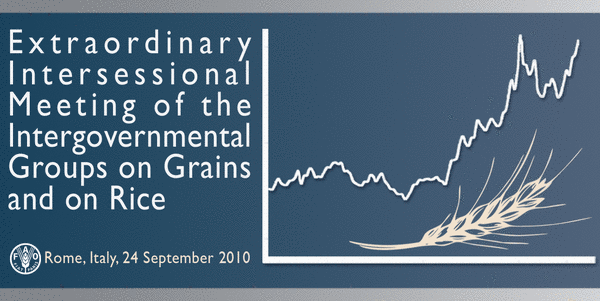Food Price Volatility Market fundamentals and commodity speculation TripleCrisis
Post on: 18 Апрель, 2015 No Comment

Timothy A. Wise
As Jayati Ghosh explained in her recent post on the “Frenzy in Food Markets,” high food prices are back and market fundamentals do not adequately explain the price rise. Still, a wide range of analysts and commentators, from Paul Krugman to the International Food Policy Research Institute. dismiss the argument that a significant part of the 2006-8 food price surge was due to speculation. They are more dismissive now, two years further removed from the bursting bubbles of the housing and financial crises.
As Krugman put it in one of several recent blog posts, “I was and remain skeptical about the speculation story in 2007-2008, because of the lack of evidence of inventory accumulation.”
Krugman and others are missing the point, or at least missing the distinction between price manipulation and excessive speculation. If a big market player hoards in a scarce market, that’s manipulation. But you don’t need manipulation to have non-commercial investors overwhelm commodities markets. And it is hard to deny the market fundamentals of our brave new “financialized” – and still-deregulated – commodities markets.
Let’s review the basics. Some $9 trillion in trades take place in commodity derivatives, with 80-90% in over the counter (OTC) trading, outside of public scrutiny. Five banks control 96% of derivatives activity, giving a few players decisive market power. The ratio of non-commercial speculators to commercial hedgers (those with a commercial interest in the traded commodity) is by some estimates 4:1, roughly a reverse of the shares ten years ago when speculators accounted for 20% of the activity. Then, such speculators indeed provided liquidity to the markets without overwhelming them. That is no longer the case.
Commodity index funds are where the market fundamentals of speculation seem unarguable, particularly in relation to agricultural commodities. Index funds, which are typically baskets of twenty or more commodities, were created by Goldman Sachs and other financial players as a hedge against declining returns in other sectors, based on the observed tendency of commodity prices to hold their value as other assets lost theirs. Index funds generally bet “long,” on rising prices, and they hold their investments for a longer time than the typical commercial hedger. This has a tendency to push prices up, which attracts more speculative capital, which adds to the volatility.
Overall, the number of derivatives contracts increased more than six-fold between 2002 and mid-2008, as these investment vehicles became a safe haven from the subprime crisis and financial meltdown. According to Masters and White. index fund purchases from 2003-7 already were higher than the futures market purchases of physical hedgers and traditional speculators combined. Then they doubled in the first half of 2008.
It would be bad enough if speculative capital simply overwhelmed commercial hedging interests in these markets. But the speculation is actually more institutionally entrenched than that. Index funds rarely hold more than 30% of their value in agricultural commodities. In fact, in July 2008 the ratio for the S&P Goldman Sachs Commodity Index, by far the largest index fund with 63% of the market, held 75% energy futures and 10% grains futures, with the rest in minerals.
So the movement of the index funds is driven by the price of oil, itself a highly speculative market with some 70% of futures investments coming from non-commercial speculators. Under such institutionalized structures, the price of oil drives the movement of the index funds and pushes up the prices of agricultural commodities, no matter what is happening to the fundamentals of supply and demand for soybeans or corn. Worse, the index funds are mandated to keep the value of their commodities in strict proportion, so that when the prices and value of energy products go up the funds have to buy more corn and soybean futures to maintain the mandated proportions. This represents yet another institutional impetus to buying agricultural futures regardless of the market fundamentals.

What part of this picture don’t the speculation-deniers see? Finance capital now dominates commercial hedging in futures markets, index funds have become huge investment vehicles in uncertain economic times, and the index funds move with oil and minerals prices, dragging food prices along with them.
Fortunately, France, as the new chair of the G20, has made the issue a priority for 2011, and in May we’ll see the first-ever meeting of G20 agriculture ministers. Meanwhile the U.S. Commodity Futures Trading Commission (CFTC) is now in the process of issuing its proposed rules re-regulating derivatives markets, implementing some of the more promising provisions of the Dodd-Frank financial reform bill. As CFTC chairman Gary Gensler stated, “I believe that increased speculation in energy and agricultural products has hurt farmers and consumers.”
We should certainly study and debate how much of the recent price volatility owes to excessive speculation and what should be done about it. But we should stop debating whether it’s a problem. The market fundamentals of commodity market speculation seem painfully clear.
For some good overviews of the issue, see:
The Great Hunger Lottery. Tim Jones, World Development Movement














